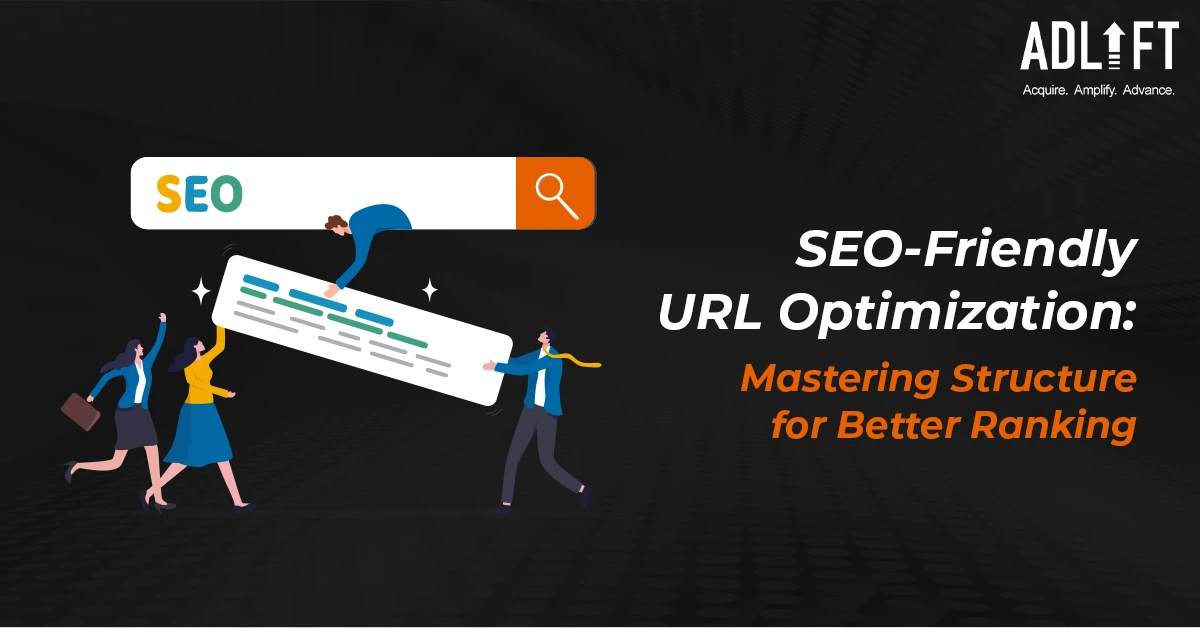SEO-Friendly URL Optimization: Mastering Structure for Better Ranking

In the vast landscape of search engine optimization (SEO), every little detail matters. From high-quality content to responsive design, the components that contribute to a website’s success are numerous. One often underestimated yet crucial element of SEO is the URL structure. Crafting SEO-friendly URLs can significantly impact your website’s search engine ranking, making it a vital aspect of your overall SEO URL optimization strategy.
The Importance of SEO-Friendly URLs
URLs are the addresses that guide users and search engines to your website’s various pages. An SEO-friendly URL is concise, descriptive, and easy for both humans and search engine bots to understand. Such URLs provide multiple benefits:
Crawlability:
Search engine bots navigate websites by following links. An SEO-friendly URL structure ensures that these bots can easily crawl and index your site, leading to better visibility in search results.
User Experience:
An SEO-friendly URL structure is crucial for user experience. When visitors see a clear and relevant user-friendly URL, they have a better idea of what to expect when they click on it. This improves user experience and can lead to higher click-through rates.
Keywords and Relevance:
SEO-friendly URLs allow you to incorporate relevant keywords, which can positively influence your page’s ranking for those terms. Keywords in the URL signal the content’s topic to both users and search engines.
Link Sharing:
URLs often appear as anchor text in links. When others share your link on their websites or social media, an SEO-friendly URL can attract more clicks and improve your site’s overall authority.
Characteristics of SEO-Friendly URLs
To create SEO-friendly URLs, certain characteristics should be kept in mind:
Descriptive:
A URL should provide a clear idea of the page’s content. Avoid generic URLs like “website.com/page1”
Short and Simple:
Lengthy URLs with excessive parameters can confuse both users and search engines. Aim for brevity while maintaining clarity.
Hyphens Over Underscores:
Use hyphens to separate words in URLs rather than underscores. Search engines treat hyphens as word separators, helping with readability.
Lowercase Letters:
URLs are case-sensitive. To avoid confusion and ensure consistency, use lowercase letters exclusively.
Crafting Effective URL Structures
The structure of your website’s URLs should follow a logical hierarchy, reflecting the organization of your content. Consider the following tips:
Subfolders:
Utilize subfolders to categorize different sections of your website. For instance, a blog could have a URL structure like “website.com/blog/article-title.”
Breadcrumb Navigation:
Incorporate breadcrumb navigation in your URLs to display the page’s position within the website’s hierarchy. This not only aids users but also provides context to search engines.
Avoid Dynamic Parameters:
Minimize the use of dynamic parameters like “?id=123” in your URLs. Instead, opt for static, keyword-rich URLs.
Link Building Process
- 36% of businesses hire outside experts or freelancers for link-building efforts.
- 48% of marketers report on “nofollow” links as part of their process.
- 42% od SEOs spend equal time on building internal and external links.
Incorporating Keywords in URLs
Keywords play a pivotal role in SEO, and including them in your URLs can provide a ranking advantage. Here’s how to do it effectively:
Focus Keywords:
Identify the primary keyword for each page and incorporate it naturally into the URL. This reinforces the page’s relevance to the topic.
Avoid Keyword Stuffing:
While keywords are essential, overloading your URL with them can appear spammy. Maintain a balance and ensure readability.
Long-Tail Keywords:
Long-tail keywords can make your URLs even more specific and targeted. For instance, “website.com/summer-dresses” is good, but “website.com/affordable-summer-dresses-online” is even better if that’s your niche.
The Role of URL Redirects and Canonical Tags
During website updates or restructuring, URLs might change. It’s crucial to handle these changes properly to avoid negative SEO consequences. Two essential tools for this are URL redirects and canonical tags:
URL Redirects:
When a URL changes, set up redirects (301 redirects) to automatically send users and search engines to the new URL. This preserves link equity and ensures a smooth transition.
Canonical Tags:
Use canonical tags to indicate the preferred version of a page when there are duplicate or similar content issues. This helps search engines understand which page to prioritize in search results.
Measuring the Impact of SEO URL Optimization
As with any SEO strategy, it’s essential to track the impact of your efforts. Here’s how you can measure the success of your SEO URL optimization:
Search Rankings:
Monitor your target keywords to see if there’s an improvement in your search engine rankings. A rise in rankings could indicate that your URL optimization is paying off.
Click-Through Rates (CTRs):
Analyze CTRs in your analytics tool to see if there’s an increase in clicks from search engine results. A higher CTR suggests that your URLs are more enticing to users.
Bounce Rates:
If users are landing on your pages but quickly leaving (high bounce rates), it could indicate a disconnect between the URL and the content. Regularly check and adjust if needed.
Parting Thoughts
In the ever-evolving world of SEO, every small tweak can make a substantial difference. SEO-friendly URLs might seem like a minor detail, but their impact on search engine ranking and user experience is undeniable. By crafting clear, concise, and keyword-rich URLs, you lay the foundation for better search visibility and improved user engagement. Remember, a well-optimized URL isn’t just a string of characters; it’s a signpost that guides both search engines and users toward your digital doorstep. You can always lean upon experts like Adlift for such professional assistance. It’s never too late to ask for assistance!
FAQs
Categories
Recent Posts
- How do I Verify My Business on Google to Ace Local SEO? March 17, 2025
- The Pros and Cons of Pay For Performance SEO March 17, 2025
- Website Structure for SEO: A Blueprint for Better Rankings March 17, 2025
- Is SEO for Subdomains Hurting your Rankings? Let’s Find Out! March 17, 2025
- Outsourcing SEO: A Cost-effective Solution for Startups to Scale Quickly March 17, 2025
- Keyword Cannibalization: Why It Matters for Your Company and How to Avoid It March 12, 2025
- The Role of SEO Projections in Budget Planning for CMOs March 11, 2025
- SEO for Bing: Unlocking Opportunities for Business Owners and Marketers March 11, 2025
- How to Maintain SEO and Rankings: Your SEO Maintenance Checklist March 7, 2025
- Must-have Enterprise SEO Tools to Boost your Online Presence March 7, 2025
Get
in Touch
Contact AdLift for a 360-degree marketing plan

